As environmental groups and policy analysts in the Mississippi River basin seek solutions to shrink a massive “dead zone” that forms off the coast of Louisiana each year, they have looked to a regional cleanup program in the Chesapeake Bay as a model.

A key component of that effort, known as the Chesapeake Bay Program, is regulation.
For nearly 15 years, it’s included a legally enforceable, multi-state pollution quota — one of a select few in the nation. This “total maximum daily load” aims to reduce the amount of nutrients, like phosphorus and nitrogen, that run off into the bay’s waters.
In excessive quantities, chemicals derived from these elements, commonly used to grow crops and fertilize lawns, can cause algae blooms and die-offs that rob waters of oxygen and suffocate aquatic life.
But the bay program’s scientific advisers recently noted the strategy is imperfect.
After two missed deadlines to reduce nutrient runoff, and a third looming, Mid-Atlantic state and federal officials are reevaluating their options.
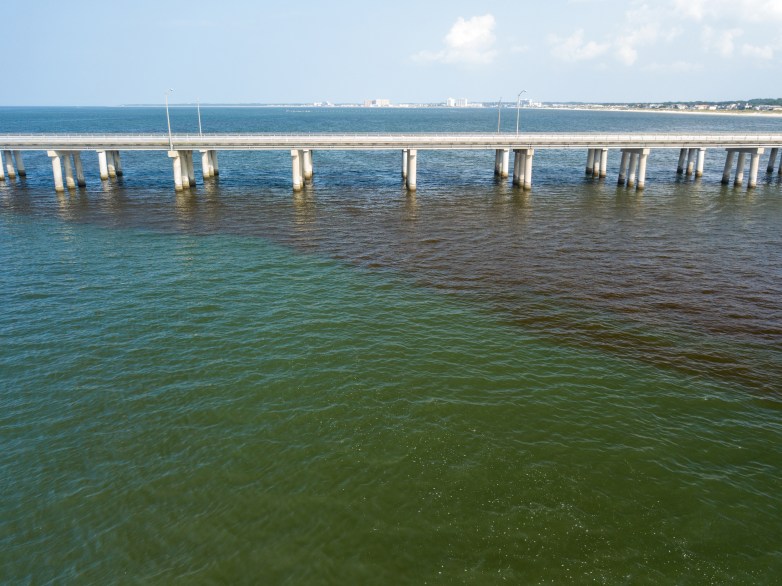
A unique legal agreement
In 1983, the Maryland, Pennsylvania and Virginia governors along with the mayor of Washington and administrator of the U.S. Environmental Protection Agency signed the Chesapeake Bay Agreement, a pledge to reduce the pollutants and sediment entering the bay that contribute to the loss of organisms like seagrasses, shellfish and waterfowl.
The tapering of nitrogen and phosphorus remained the focus of subsequent agreements, but the jurisdictions did not meet their goals voluntarily, so in 2010 the EPA created the country’s most expansive pollution quota. It applied to six states — Delaware, Maryland, New York, Pennsylvania, Virginia and West Virginia — and the District of Columbia.
The quota’s creation and enforcement took political arm-twisting, including an act of Congress, a presidential executive order and multiple lawsuits. It requires nutrient plans from each jurisdiction and “reasonable assurances” each will take steps to control pollution from “nonpoint sources” like farm fields and parking lots.
If states fail to meet their obligations by set deadlines, the EPA can implement stricter limits, force unregulated polluters to get permits and redirect or condition grant money.
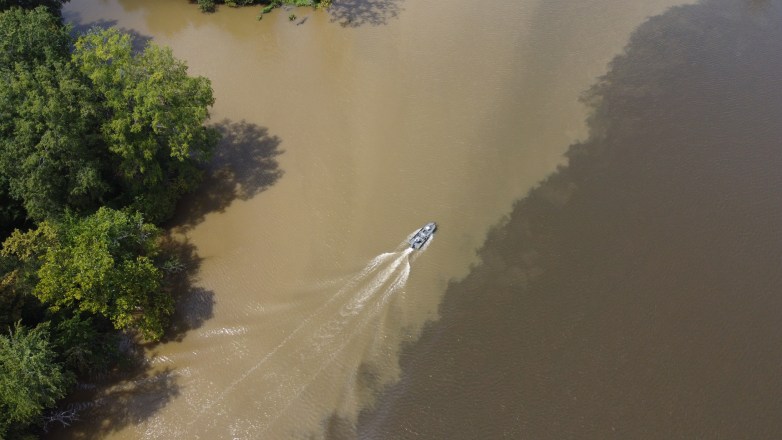
Signatories believed they would achieve the program’s primary goal — improving habitat for the bay’s aquatic life — if they capped nitrogen and phosphorus entering the Chesapeake each year at 214.9 million and 13.3 million pounds, respectively, and sediment at 18,587 million pounds per year.
Instead, scientific modeling estimated that 258 million pounds of nitrogen and 15 million pounds of phosphorus entered the bay in 2021, a reduction from previous years thanks to upgrades to wastewater treatment plants and lower airborne emissions, but still off the mark. The program did hit its sediment target.
The bay program’s advisers say those declines represent achievements. Without the nitrogen and phosphorus reductions, things could be a lot worse as the region’s waters warm, urban population grows and agriculture expands. The bay’s 1-cubic-mile dead zone also might be even larger.
Nonetheless, the sluggish progress remains an inconvenient truth. Officials have concluded they will not meet a 2025 deadline to stem the flow of nutrients after failing to achieve benchmarks set for 2000 and 2010.
“At the rate we’re going, it’s going to take about 150 years,” said Denice Wardrop, a bay program science adviser who directs the Chesapeake Research Consortium. “We better learn how to do it better.”
The program offers lessons for the Mississippi River basin too.
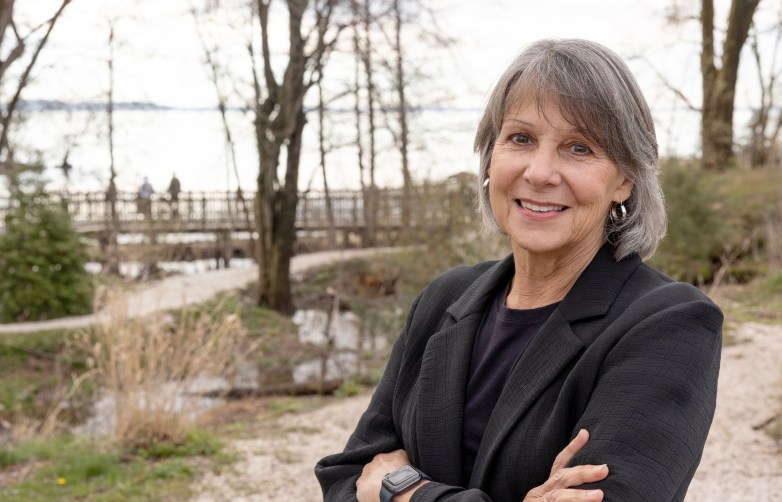
Something is better than nothing
Efforts in the Mississippi River, where environmental regulations are comparatively lax, to reduce annual injections of waterborne nutrients into the Gulf of Mexico largely have failed. This summer’s hypoxic zone is forecast to span 5,827 square miles, 5% larger than average.
Scientists expect climate change to worsen conditions by warming the gulf’s waters, which would cause it to retain even less dissolved oxygen, and increasing rain, causing more runoff.
“The way that we operate right now is very much a state-by-state, choose-your-own-adventure model,” said Maisah Khan, former policy director at the Mississippi River Network.
Several groups say the federal government needs to lead and coordinate state restoration efforts, as it does in the Chesapeake Bay.
A Mississippi River-wide nutrient quota could streamline and prioritize runoff control projects and allocate federal dollars where they are needed most. Numerous academics and the National Research Council Water Science and Technology Board of the National Academies also embrace the concept.
“Without that,” said Alicia Vasto, water program director with the Iowa Environmental Council, “I think we’re kind of rudderless.”
So why doesn’t a Mississippi River quota already exist?
For one, the scale of the problem, said professor emeritus David Dzombak of Carnegie Mellon University, who chaired the National Academies committee that recommended policies to improve the river’s water quality.
Given the challenges that come with coordinating nutrient quotas in the 64,000-square-mile bay watershed, doing so across 1.2 million square miles in the Mississippi River basin — which comprises 41% of the continental United States — seems unimaginable.
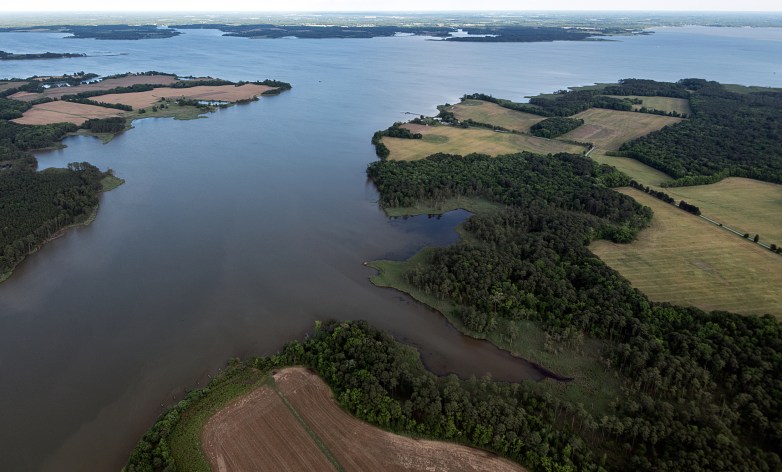
Another factor: political will.
Basin states must cooperate with their neighbors to enforce a quota, but their interests vary significantly. Far upstream, a Louisiana shrimp trawler’s livelihood is all but haze in the distance. Meanwhile, few states are hungry for more federal oversight, and the EPA is likewise reluctant to brandish a stick.
The agency said it prefers helping states develop their own lists of impaired waters and cleanup plans, rather than doing so itself for an entire region all at once.
That’s exactly what environmental groups say isn’t working.
A better quota
Yet Chesapeake Bay scientists admit their regional nutrient quota isn’t a panacea.
“It’s a two-edged sword,” Wardrop said. “While it had some wonderful benefits in initiating action, of building an accountability system, it had some consequences where you got painted into a corner.”
Regulators fixated on tabulating the total pounds of sediment, nitrogen and phosphorus that drain into the bay’s deep channel (where the hypoxic zone forms each year), she said, instead of considering other ways to improve conditions for its plants and animals.
For instance, restoring wetlands and protecting shorelines could enhance shallow-water habitat for fish and mollusks, even if the bay program hasn’t completely reduced nutrient runoff.
“Yes, phosphorus and nitrogen are important, but it’s not a fix-all,” said Zach Taylor, freshwater mussel hatchery manager at the Maryland Department of Natural Resources. “There are still other considerations for improving the water quality, but I do think that it’s a good place to start.”

Because the bay’s shallows respond more quickly to falling nutrient levels, scientists say, the program should prioritize those regions for habitat improvement, which could help rally public enthusiasm.
The same holds true for the Mississippi River basin. Improving water quality in upper basin states helps that region and the gulf, said Doug Myers, Maryland senior scientist with the Chesapeake Bay Foundation.
“You certainly don’t want your whole Mississippi River project tied to meeting dissolved oxygen criteria in the Gulf of Mexico,” he said. “It’s the people who live in those inland states that are gonna have to see the benefits for themselves and get excited about it for the benefit of their communities.”
The elephant in the room
As industry and sewage facilities cut their discharge, agricultural runoff now ranks as the largest remaining contributor to the bay’s water pollution — about half of all nitrogen and a quarter of phosphorus.
The situation is more pronounced in the Mississippi River basin, where an estimated 60% to 80% of the nitrogen entering the gulf originates at farms and livestock operations.
Bay scientists say a nutrient imbalance impedes improvement more than anything else.
As farms multiply and expand, agricultural producers import more nutrient-rich fertilizer and animal feed. Hungry livestock convert feed into manure, which farmers apply to fields along with synthetic fertilizer. But crops don’t absorb all the nutrients. Excess nitrogen and phosphorus build up in soil, resulting in harmful runoff.
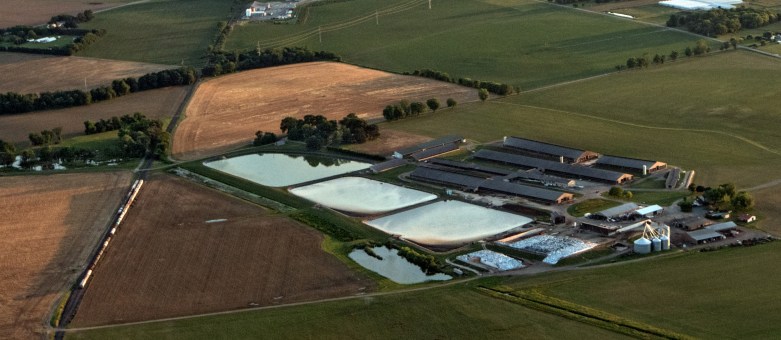
The source of the bay program’s authority, the Clean Water Act, can’t place pollution limits on field runoff. Instead, state and federal agencies offer grants and incentives to encourage producers to adopt better practices like planting cover crops or ceasing to till fields before planting.
But bay researchers say agencies promote these practices without considering their effectiveness or placement.
The cheapest interventions, such as cover crops, offer farmers private benefits like improved soil health. But they are the least efficient at removing nutrients from the ground compared to other remedies like denitrifying bioreactors, structures that reduce nitrogen in field runoff.
That leaves taxpayers with the fewest pounds of nutrients removed per public dollar spent.
The scientists say the program could stop tallying the number of nutrient-cutting practices installed on farms and instead incentivize success. For example, regulators could measure the nitrogen coming off fields and pay farmers when they fall under a set limit.
“We’ve maybe got to change our incentivizing systems for how we ask farmers to do things,” Wardrop said.
This story is part of the series Farm to Trouble from the Mississippi River Basin Ag & Water Desk, an editorially independent reporting network based at the University of Missouri School of Journalism in partnership with Report For America and funded by the Walton Family Foundation. Wisconsin Watch is a member of the network. Sign up for our newsletter to get our news straight to your inbox.
This article first appeared on Wisconsin Watch and is republished here under a Creative Commons license.![]()
More Articles
“Definitely worse”: Lots more mosquitoes across Wisconsin this summer
6/27/2024 | Savanna Tomei-Olson
If you’re getting bitten more this summer, it’s not just you.
Former Pine Valley Community Village Administrator Arrested
6/27/2024 | Jo Ann Krulatz
A former Richland County employee at Pine Valley Community Village has been arrested following an investigation. The County became aware of alleged threats made against Administrator, Shaponda Ann Jimerson, 38 of Middleton, and immediately referred the matter to law enforcement, which led to a parallel investigation into the allegations. In April, the Richland County Sheriff’s […]
A Rare Tsunami-like Wave on Lake Michigan Strikes Again
6/27/2024 | Meteorologist Brittney Merlot
A Rare Tsunami on Lake Michigan Strikes Again. Yes, you read that right a rare tsunami-like big wave raced from Racine and flooded local beaches in Holland.
Duluth Affordable Housing Complex Unveils Massive Renovation
6/27/2024 | James Kelly
A Duluth affordable housing complex unveiled its new multi-million dollar renovation with a ribbon cutting ceremony on Wednesday.
Oshkosh Pride comes to the Leach Ampitheater
6/27/2024 | Lisa M. Hale
Colorful flags and colorful people will grace the Leach Amphitheater when Oshkosh Pride returns on June 29th from 2 to 7 pm. Organizers say there will be lots of entertainment, food, vendors, resource booths, activities and more.

